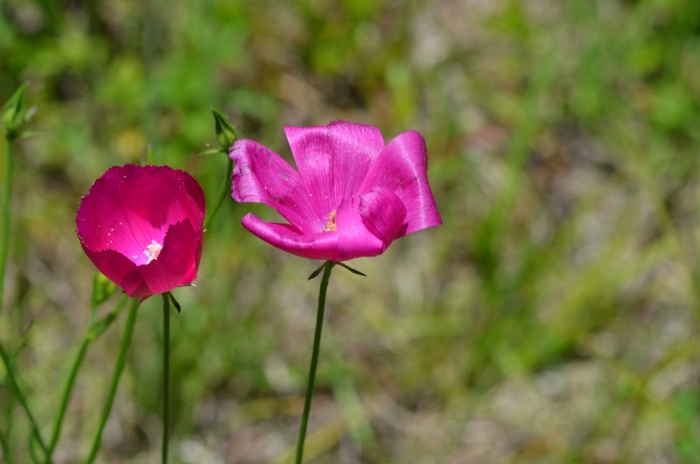Woodland Poppymallow
(Callirhoe papaver)
Woodland Poppymallow (Callirhoe papaver)
/
/

Jody Shugart
CC BY 4.0
Image By:
Jody Shugart
Recorded By:
Copyright:
CC BY 4.0
Copyright Notice:
Photo by: Jody Shugart | License Type: CC BY 4.0 | License URL: http://creativecommons.org/licenses/by/4.0/ | Rights Holder: Jody Shugart | Publisher: iNaturalist | Date Created: 2019-05-10T13:00:39-07:00 |





























Estimated Native Range
Summary
Callirhoe papaver, commonly known as Woodland Poppymallow, is a semi-deciduous perennial herb native to open woodlands and forest edges in the Southeastern United States. It typically grows to a height of 0.5-1 feet (0.2-0.3 meters) and spreads 1-2 feet (0.3-0.6 meters), forming a low, mounding clump of deeply lobed leaves. The plant is adorned with cup-shaped flowers, which are a striking combination of red and purple, blooming profusely from summer into fall. The flowers are quite showy and attract pollinators such as bees and butterflies.
Woodland Poppymallow is valued for its vibrant flowers and its ability to thrive in a variety of light conditions, making it a versatile choice for gardeners. It is often used in border plantings, native plant gardens, and as a ground cover. This plant prefers well-drained soils and can tolerate periods of drought once established, making it a low-maintenance option for xeriscaping. While it enjoys full sun, it can also perform well in part shade or even full shade, offering flexibility in garden design. There are no major disease problems, but it can be susceptible to root rot if overwatered or planted in poorly drained soils. It is not known to have aggressive roots or to be invasive when grown outside its native range.CC BY-SA 4.0
Woodland Poppymallow is valued for its vibrant flowers and its ability to thrive in a variety of light conditions, making it a versatile choice for gardeners. It is often used in border plantings, native plant gardens, and as a ground cover. This plant prefers well-drained soils and can tolerate periods of drought once established, making it a low-maintenance option for xeriscaping. While it enjoys full sun, it can also perform well in part shade or even full shade, offering flexibility in garden design. There are no major disease problems, but it can be susceptible to root rot if overwatered or planted in poorly drained soils. It is not known to have aggressive roots or to be invasive when grown outside its native range.CC BY-SA 4.0
Plant Description
- Plant Type: Herb
- Height: 0.5-1 feet
- Width: 1-1.5 feet
- Growth Rate: Moderate
- Flower Color: Red, Purple
- Flowering Season: Summer, Fall
- Leaf Retention: Semi-Deciduous
Growth Requirements
- Sun: Full Sun, Part Shade
- Water: Medium
- Drainage: Fast
Common Uses
Bee Garden, Butterfly Garden, Drought Tolerant, Low Maintenance
Natural Habitat
Open woodlands and forest edges
Other Names
Common Names: Woods Poppymallow
Scientific Names: , Callirhoe papaver, Malva grandiflora, Malva nuttalloides, Malva papaver, Malva papaveriformis, Nuttallia ambigua, Nuttallia grandiflora, Nuttallia papaver, Sesquicella papaver
GBIF Accepted Name: Callirhoe papaver (Cav.) Gray